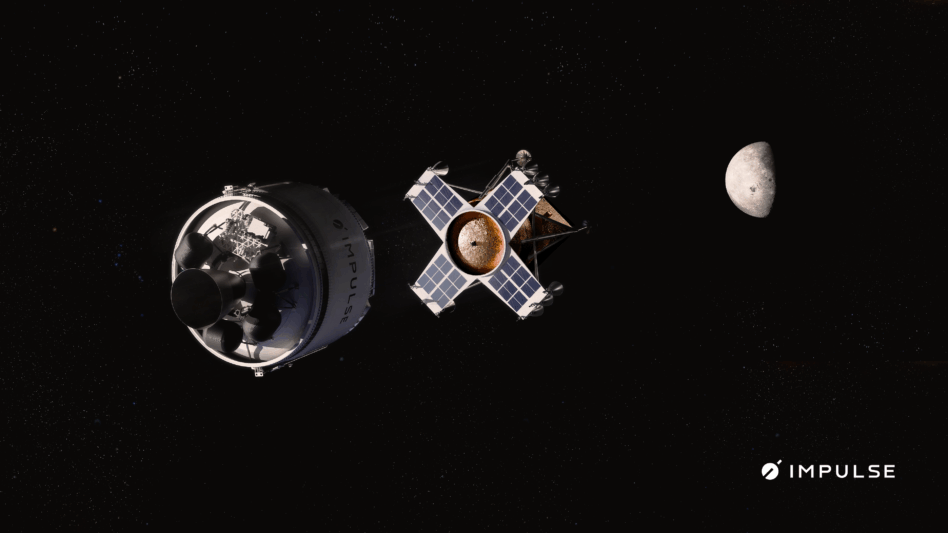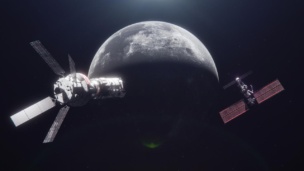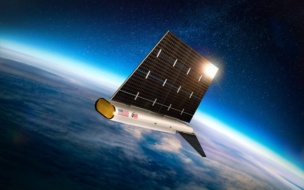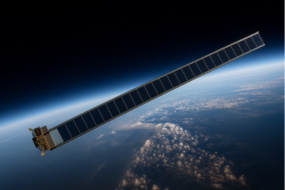Getting to the Moon is about to get a whole lot easier—at least, if Impulse Space can execute on its new mission to go beyond operations in LEO and GEO.
Today, the in-space propulsion startup unveiled its vision of building a lunar cargo delivery service, which will aim for regular Moon missions beginning in 2028 to meet the market’s growing demand for lunar access.
The plan builds on the company’s existing mission profile—bringing payloads to GEO using the Helios propulsion system, which is set to fly its first mission next year. But instead of stopping at GEO, Impulse’s lunar rides deliver customers from LEO to the Moon aboard an Impulse-designed lander.
“This has really always been a part of the plan,” Impulse Space President and COO Eric Romo told Payload. “[With Helios] we can design and meet a need in one part of the market, but that hopefully has use across other parts of the market…for ascending mass to the Moon.”
Pumped up kicks: The new lunar service will rely heavily on the flight-proven technology that Impulse has already developed for orbit-lifting flights, from LEO to GEO.
The lander will utilize a similar thruster technology that Impulse has demonstrated on multiple flights of its Mira vehicle. According to CEO Tom Mueller, this tech already meets the requirements of lunar landings: throttleable, restartable engines powered by stable, storable fuel that is capable of undertaking the high-specific-impulse maneuvers needed for controlled lunar descents.
Impulse expects Helios, and the company’s new lander, to be able to send approximately six tons total of hardware to the lunar surface across two missions in 2028.
“If your North Star is a human presence on the Moon, you need tons—you need multiple tons,” Romo said. “A lot of the cost that you have in any cargo [that] you deliver to the Moon is going to be around the launch vehicle. And using an upper stage like Helios allows you to get a lot more mass off of the same launch vehicle.”
What’s next: By repurposing a lot of proven technology, Impulse is confident it will be able to meet its aggressive timeline. The company developed its Mira spacecraft from idea to operations in under 15 months. If it can set up lunar flights by 2028, officials say it will effectively open the door for government and commercial customers to begin building robust infrastructure on the lunar surface before SpaceX’s Starship comes online.
Impulse, which raised a $300M Series C in June, has already invested in building its production capacity for Helios kick stages. Romo told Payload that he expects the company’s headcount to grow from 300 to 400+ employees to meet the company’s lunar goals.



